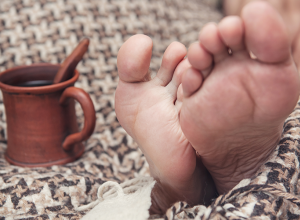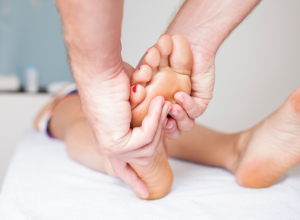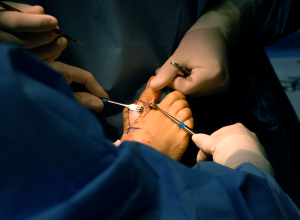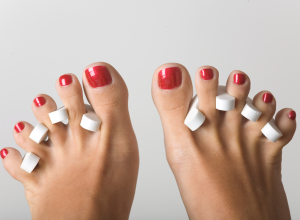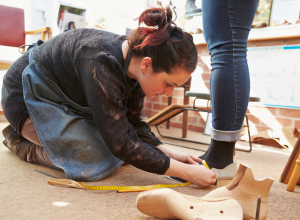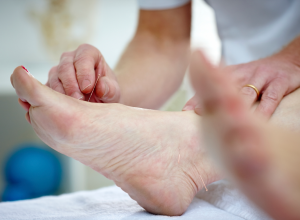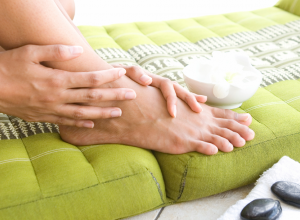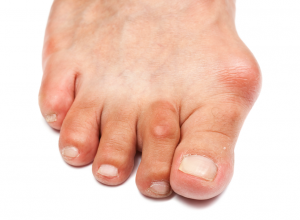
Bunion
A bunion, medicalled referred to as a hallux abducto valgus, is a deformity characterized by the enlargement of bone or tissue around the joint at the head of the big toe.
Symptoms
The painful, bony lump occurs when the big toe begins to angle toward the second toe. It can cause swelling, redness and soreness around your big toe joint, as well as a thickening of skin at the base of your big toe. Some people also develop calluses and corns near the bunion, usually where the big toe and second toe overlap.
Sometimes, bunions can cause bursitis (a painful condition in which the fluid-filled pads that cushion your bones become inflamed), hammertoe (a deformity in which your toes curl under) and metatarsalgia (pain and inflammation in the ball of your foot).
In some cases, bunions cause a change in gait, which can then cause pain in the legs, knees, hips and back.
Causes
The deviation of the toe tissue is thought to stem from both genetics and wearing tight-fitting shoes, the latter of which can cause tissue swelling and tenderness that can create the anomaly on the joint of the big toe (officially called the metatarsophalangeal joint). Other causes of bunions include rheumatoid arthritis, foot injuries and deformities present at birth.
Treatment and Prevention
Bunions are a permanent deformity, but sites like WebMD and MedicineNet and MedlinePlus agree that most cases do not require medical treatment. However, you may want to see a podiatrist if you are experiencing persistent foot pain, decreased movement in your metatarsal area and/or difficulty finding shoes that fit because of the hallux abducto valgus. In rare cases, an orthopaedic surgeon may recommend surgery to fix the bunion.
You can decrease your chance of forming a bunion if you wear comfortable, properly fitted shoes and avoid high heels. For those who already have bunions, exercises and foot soaks to help reduce bunion pain and progression are usually podiatrist recommended.
Notice concerning medical entries:
Articles having medical content shall serve exclusively for the purpose of general information. Such articles are not suitable for any (self-) diagnosis and treatment of individual illnesses and medical indications. In particular, they cannot substitute for the examination, advice, or treatment by a licensed physician or pharmacist. No replies to any individual questions shall be effected through the articles.




